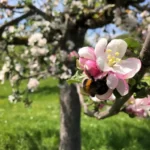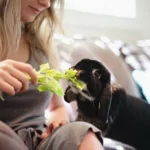Marigolds, with their vibrant and cheerful blooms, have a special place in gardens worldwide. Gardeners adore these hardy and colorful flowers for their ability to brighten up any landscape. One common question that often arises is, “How long do marigolds bloom?” In this article, we’ll delve into the intriguing world of marigolds and uncover the secrets behind their blooming duration. Whether you’re a seasoned gardener or just starting out, understanding the lifecycle of marigolds can help you make the most of these delightful flowers.
- 10-30-20 Analysis – Great for producing brighter, more plentiful flowers in flowering plants.
- Many Ways to Feed – Blossom Booster can be used as a foliar or root feeding product. Great for spraying directly onto leaves, roots, or when used in a continuous feed system.
- Water-Soluble Powder – Powdered concentrates go further than liquid fertilizers. Simply mix your measured powder with water and you are ready to feed with multiple gallons of liquid fertilizer!
- Included Measuring Spoon – All Jack’s Classic fertilizers come with a convenient spoon to create the right amount of liquid fertilizer for your plants.
- Micronutrients – Added micronutrients supply your plant with the nutrition it needs for optimal growth and health. Unlike other fertilizers, additional feeding is not required.
Marigolds
Before we explore the duration of marigold blooms, let’s get to know these delightful flowers a bit better. Marigolds, scientifically known as Tagetes, are renowned for their vibrant colors, including shades of gold, orange, and yellow. Their distinctive aroma and lush foliage make them stand out in gardens and floral arrangements. Marigolds are known for their resilience, adaptability, and pest-repelling properties, which add to their popularity among gardeners.
Annual Marigolds
The majority of marigolds cultivated in gardens are annuals. This means they complete their lifecycle in a single growing season. Here’s what you need to know about annual marigolds and their blooming duration:
- Blooming Season: Annual marigolds typically bloom from late spring, continuing through the summer, and into the fall until the first frost arrives. Their vibrant flowers brighten up gardens during the warm months.
- Deadheading: To extend the blooming season of annual marigolds, consider deadheading, which involves removing spent flowers. This encourages the plant to produce more blooms, prolonging the colorful display.
Annual marigolds are cherished for their reliability in producing a profusion of blooms throughout the growing season.
Perennial Marigolds
While annual marigolds are the most common choice for gardens, there are also perennial varieties of marigolds, such as Mexican marigolds (Tagetes lemmonii). Here’s what you need to know about perennial marigolds and their blooming duration:
- Perennial Variety: Mexican marigolds are an example of perennial marigolds. These plants can bloom throughout the year in regions with mild winters. In areas with warmer climates, they may even produce flowers during the winter months, providing continuous color.
- Intermittent Blooming: It’s important to note that perennial marigolds, including Mexican marigolds, may have intermittent blooming periods in regions with colder winters. They often go through cycles of flowering and rest, with the most prolific blooms occurring in the warmer months.
Perennial marigolds are favored for their ability to provide bursts of color year-round in suitable climates, making them a valuable addition to gardens in regions with mild winters.
- COMPACT & VIBRANT BI-COLORED BLOOMS: Standing at 10 inches tall, our Tagetes Patula Nana Double Brocade Red French Marigold seed blooms annually and is a versatile addition to your home or garden. Ideal for yards, gardens, containers, or as an indoor houseplant, its compact size ensures it fits elegantly into any space featuring its shades of red and yellow colored blooms.
- LONG BLOOMING & POLLINATOR-FRIENDLY: Blooming continuously from spring through fall, our easy growing flower seeds bring months of vibrant color while attracting bees and butterflies that support garden habitat. Our live marigold plants grows fully by just sowing it 3 seeds per plant with 8 inch spacing at 70-75F degrees while covering it lightly to germinate for 5-20 days.
- LOW MAINTENANCE & HEAT TOLERANT: Ideal for gardeners of all skill levels, our robust marigold seeds for planting outdoors thrive in full sun using a well-drained moist soil with a pH of (5.6-6.5). Heat-tolerant and easy to grow, they are resilient to hot climates and has the ability to produce lush, vibrant, and colorful displays while requiring minimal care.
- FRAGRANT AND DEER PROOF: Immerse yourself in the captivating sensory experience of aromatic foliage complemented by the enchanting fragrance of marigold scent flowers, creating a harmonious blend of visual and delight. Its deer deterring trait ensures your marigold plants live and remain intact while flourishing making it the ideal plant in wildlife prone areas.
- VERSATILE AND ADAPTABLE: Our marigolds are great outdoor seeds as they thrive in various weather conditions under USDA Zones 3–10 while also being suitable for indoor sowing. Therefore, making our marigold flowers an excellent choice for gardens of any size or location, bringing vibrant beauty and adaptability to your space.
Factors Affecting Blooming Duration
The blooming duration of marigolds is influenced by various factors. Here are some key factors that can affect how long marigolds bloom:
- Temperature: Marigolds thrive in warmer temperatures, and their blooming season is closely tied to the weather. In cooler climates, they may have a shorter blooming period compared to regions with extended warmth.
- Sunlight: Adequate sunlight is essential for marigolds to produce flowers. Insufficient sunlight can result in reduced blooming. Ensure your marigolds receive at least 6 hours of sunlight per day for optimal flowering.
- Soil Quality: Soil quality also plays a role in blooming duration. Well-draining soil enriched with organic matter can support healthier plants with longer blooming periods.
- Care and Maintenance: Proper care, including regular watering, deadheading, and occasional fertilization, can extend the blooming season of marigolds. Neglecting care may result in shorter blooming periods.
By understanding these factors and providing the right conditions, you can maximize the blooming duration of your marigold plants, whether they are annual or perennial varieties. In the next section, we’ll share tips on how to prolong the blooming period of your marigolds for a colorful and vibrant garden.
- Growing indoors is easy under the right conditions; Miracle-Gro Houseplant Potting Mix combines key elements plants need to thrive
- Recommended for growing beautiful indoor houseplant varieties like Pothos, Spider Plants, Monstera, Philodendron, English Ivy and more
- This indoor plant soil is less prone to gnats, thanks to the combination of perlite, sphagnum and peat moss that’s just right
- Certified by the Mulch & Soil Council as a quality product in compliance with industry standards
- A single 4-qt bag fills an 8-inch container; for even more spectacular results, start regular feedings with Miracle-Gro Plant Food 30 days after planting
Prolonging Marigold Blooms
To make the most of your marigold blooms and enjoy their vibrant colors for an extended period, consider these tips:
- Deadheading: Regularly deadhead your marigold plants by removing spent flowers. This encourages the plant to produce new blooms and can significantly extend the blooming season.
- Watering: Provide consistent moisture by watering your marigolds when the top inch of soil feels dry. Avoid waterlogged soil, as this can lead to root rot, which may shorten the blooming period.
- Fertilization: Use a balanced, water-soluble fertilizer with equal NPK (nitrogen, phosphorus, potassium) ratios or one slightly higher in phosphorus to encourage flowering. Apply fertilizer according to the package instructions but avoid over-fertilizing, which can lead to excessive foliage growth at the expense of blooms.
- Planting Early and Late-Blooming Varieties: Mix early and late-blooming marigold varieties in your garden. This strategic planting can provide continuous color from early spring through late fall, offering an extended blooming season.
By following these practices, you can prolong the blooming period of your marigolds and enjoy their cheerful display for an extended time.
- Miracle gro 10-18-9 promotes more blooms and spectacular colours on flowering plants
- Essential micronutrients nourish above and below soil, supporting strong, vibrant growth
- Contains organic ingredients: kelp, earthworm castings, feather meal and bone meal
- Easy to shake on annuals, perennials and roses
- Feeds up to 3 months
Conclusion
In conclusion, the duration of marigold blooms depends on various factors, including the type of marigold (annual or perennial) and environmental conditions. Annual marigolds typically bloom from late spring to the first frost in the fall, with deadheading and proper care helping extend their display. Perennial marigolds, such as Mexican marigolds, can provide year-round color in mild climates but may have intermittent blooming in colder regions.
To make your marigolds bloom longer, remember to provide them with the right amount of sunlight, moisture, and nutrients. Regular deadheading and strategic planting of early and late-blooming varieties can also contribute to a more extended and colorful blooming season. Whether you choose annuals or perennials, marigolds are a delightful addition to any garden, adding warmth and vibrancy to your outdoor space. Enjoy the beauty of these cheerful flowers throughout their blooming journey!








